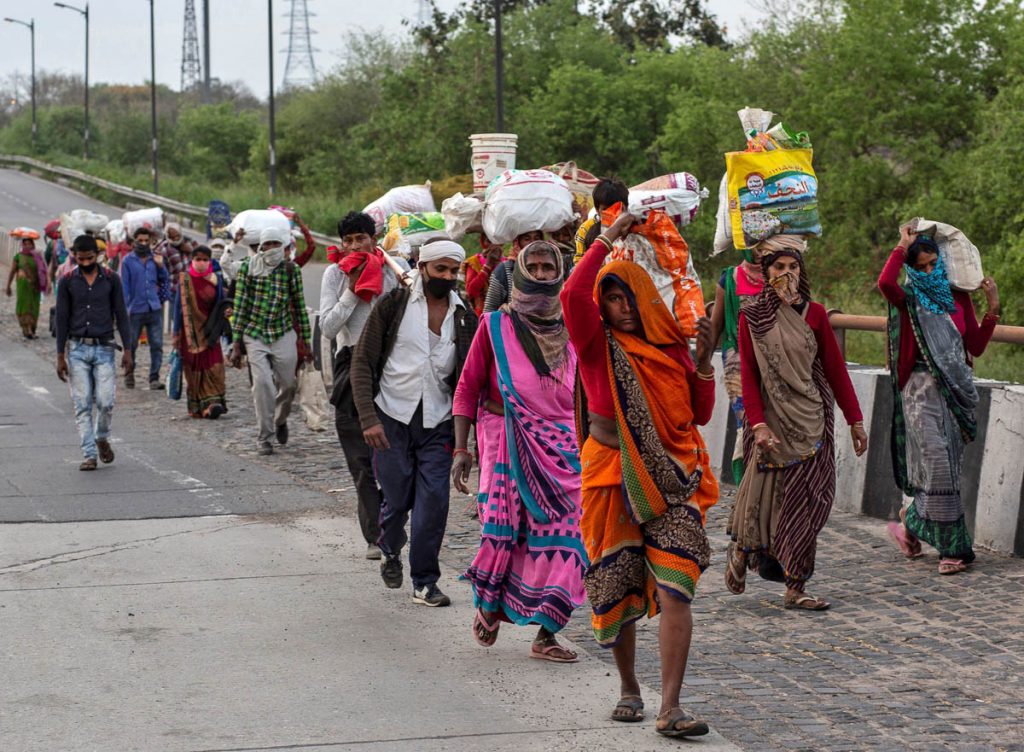Aparimita Mishra
The coronavirus-induced lockdown severely affected many lives. The plight of migrants and their families, captured through horrifying images, brought out their rights to the centre stage. Partly as a response to this, state agencies and NGOs tried to provide some help to stranded workers. However, the problems faced by women workers, particularly from less developed states like Odisha, remained largely invisible.
Mobility of workers is not a new phenomenon though its frequencies have increased in recent decades. The latest data, which is almost 10 years old, provides a glimpse of changing patterns of inter-state migration. As per Census 2011, there were 54.3 million inter-state migrants in India, of which 30.4 million were females. Nearly 1.3 million migrants from Odisha reside outside the state, out of which 53 per cent are females. The top five destinations for women migrants from Odisha are Chhattisgarh, Andhra Pradesh, Jharkhand, West Bengal and Gujarat.
The main causes of migration of women are marriage and movement of families. Hence, there is a tendency to neglect women migrants in policy-making. However, women are increasingly migrating out for employment. Census data reveals that out of the total out-migrants from Odisha for a duration of less than one year, 21 per cent of women have migrated for employment. Besides, many women start working to supplement their family income after reaching their destinations, even if the initial cause is marriage. Even those women migrants, who are not part of the labour-force, contribute to the household economy through their unpaid and care work. Without their labour, a substantial section of the migrant labour would not be able to survive with meagre wages. Similarly, the left-behind women of migrant households, in the absence of men, shoulder major household responsibilities. However, women migrants remained largely invisible in the policy response towards the Covid-19 crisis.
Women workers are mostly found in low-paid, vulnerable employment. They suffered immensely during the lockdown. Lack of income, inability to pay house rents and lack of savings added to their miseries.
In recent years, migration scenario from Odisha has undergone substantial changes, and it is valid for women as well. However, official statistical systems are blind to such changes. We simply do not have enough reliable information about migrant workers from Odisha. Field surveys and newspaper reports suggest many women migrants were recruited through labour contractors. Those who worked in sectors such as garments, brick kilns, construction and live-in domestic work faced restrictions on mobility. Women workers were subjected to coercion, confinement, and, in some cases, mental and physical violence by employers and associates.
Digital divide across genders leads to systematic exclusions. The government’s efforts to provide relief through cash transfers to Jan-Dhan accounts, Building and Other Construction Workers’ Welfare Board and Aadhaar are likely to have excluded many women workers. Further, health rights of women seem to have taken a back seat during the crisis. When stranded workers and their families tried to return, the special needs of pregnant and sick women were ignored.
After reaching their homes, migrants, especially women faced additional problems, such as hostility of local population, lack of adequate facilities for quarantine. Incidents of caste and gender discriminations were reported in some places. Besides, the access of women to livelihood generation programmes like NREGA and Garib Kalyan Yojana was limited.
As migrants and their families attempt to survive the crisis, the role and condition of women within the households deserve particular emphasis. During a crisis, it is typically the health and nutrition of women of the household that suffer disproportionately. Also, a typical household survival strategy is to substitute purchased products by home-made and unpaid goods and services, the burden of which falls largely on women. The National Commission of Women has recorded a sharp rise in domestic violence against women amid the lockdown.
The invisibility of women from official statistics and policy discourse has marginalised them from the limited state-support. The post-pandemic economic situation is likely to marginalise women further. There is an urgent need to examine the gender sensitivity of short and medium-term programmes that have been announced. The specific vulnerabilities of women migrants have to be taken into account in designing and implementing livelihood support programmes.
The author is an independent researcher based in New Delhi.
